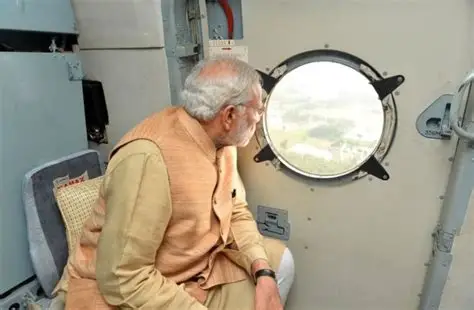Published August 29, 2025
As devastating floods ravage Punjab and threaten to surge into Sindh, claiming hundreds of lives and displacing thousands, Pakistan finds itself grappling not only with the fury of nature but also with a calculated human element: India’s blatant weaponization of shared waters. While heavy monsoon rains and the undeniable impacts of climate change have intensified the crisis, New Delhi’s unilateral actions—flouting international agreements and withholding critical data—have exacerbated the suffering. This is no mere oversight; it is a deliberate strategy that undermines decades of fragile cooperation and risks pushing the region toward greater instability.
The roots of this crisis trace back to the Indus Waters Treaty (IWT), signed in 1960 under World Bank auspices, which has long served as a cornerstone of water-sharing between India and Pakistan. The treaty allocates the eastern rivers—Ravi, Beas, and Sutlej—to India, while granting Pakistan control over the western rivers—Indus, Jhelum, and Chenab. For over six decades, it weathered wars, diplomatic freezes, and disputes over projects like India’s Kishanganga and Ratle dams, thanks to mechanisms like the Permanent Indus Commission (PIC) for data exchange and conflict resolution.
But that fragile equilibrium shattered in April 2025. On April 22, a terrorist attack in Pahalgam’s Baisaran Valley in Indian-administered Kashmir claimed 26 lives, an act India swiftly attributed to Pakistan-based militants. The very next day, April 23, India announced it was placing the IWT “in abeyance,” suspending its participation unilaterally—a move unprecedented in the treaty’s 65-year history. Pakistan denounced this as illegal, arguing that the IWT, as an international agreement, cannot be paused at whim, and warned that any diversion of waters would be seen as an “act of war.”
The fallout was immediate and aggressive. Just days later, between April 26 and 27, India released unannounced waters from the Uri Dam into the Jhelum River, causing flash floods in Pakistan-administered Kashmir. This was no routine release; it was a demonstration of leverage, flooding communities without the customary warnings or data-sharing mandated by the PIC.
Escalation continued into May. On May 5, India drastically reduced flows in the Chenab River, with inflows at Pakistan’s Marala Headworks plummeting—a clear violation of the IWT’s provisions against arbitrary stoppages. Around the same time, India flushed reservoirs from dams along the Indus, further disrupting Pakistan’s water supply. These actions not only threatened agriculture and hydropower in Punjab but also signaled India’s intent to use water as a retaliatory tool amid broader tensions, including missile strikes on May 7 that marked a brief but intense armed conflict.
By June, as drought-like conditions loomed in Pakistan, Islamabad dispatched four urgent letters to New Delhi pleading for the treaty’s reinstatement. Pakistan also appealed to the World Bank, the treaty’s guarantor, but the institution declined to intervene, citing the political nature of the suspension. Meanwhile, international legal experts, including those referencing precedents from the Permanent Court of Arbitration (PCA), have affirmed that unilateral abeyance is unlawful—yet India persists, ignoring calls for dialogue.
The current floods bring this chronology to a grim climax. On August 24, as monsoon swells overwhelmed Indian dams, New Delhi issued vague “high flood” warnings via diplomatic channels rather than the PIC, bypassing the treaty’s structured protocols for precise, technical data on flow volumes, timings, and affected rivers. Days later, on August 26-27, India opened gates at key dams including Thein (on the Ravi), Madhopur Headworks (Ravi), Baglihar (Chenab), Salal (Chenab), Bhakra (Sutlej), and Pong (Beas), unleashing up to 75,000 cusecs of water into Pakistan. Without detailed coordination, these releases compounded natural downpours, leading to “exceptionally high” floods in rivers like the Chenab, Ravi, and Sutlej. Over 150,000 people were evacuated from border areas in Punjab, but the lack of specifics left authorities scrambling, amplifying destruction in already vulnerable regions.
India may cloak these actions in “humanitarian” rhetoric, claiming warnings were issued despite suspended ties. But this is mere theater for the global stage. True humanitarianism would involve restoring the IWT, resuming PIC meetings, and sharing real-time data to mitigate disasters. Instead, New Delhi’s approach reeks of opportunism, exploiting climate vulnerabilities to score political points amid ongoing Kashmir disputes.
Pakistan, as the lower riparian state, bears the brunt of this upstream aggression. Our agriculture, which relies on Indus basin waters for 90% of irrigation, faces existential threats; power generation falters; and floods now carry the added sting of man-made malice. Legally, we stand on firm ground—the PCA and other arbiters have repeatedly upheld the IWT’s inviolability. Morally, weaponizing water against a neighbor violates basic principles of international law and humanity.
It is time for Pakistan to intensify diplomatic pressure: bilaterally, through backchannel talks; multilaterally, at forums like the UN and World Bank; and legally, by pursuing arbitration. Domestically, we must bolster flood defenses, improve forecasting with satellite tech, and diversify water resources to reduce dependency. But ultimately, cooperation is the only path forward. India must cease politicizing rivers that sustain millions—before this “water war” drowns us all in shared catastrophe.




















